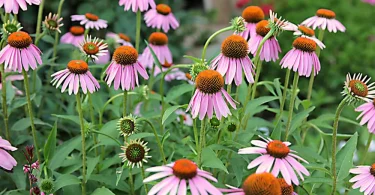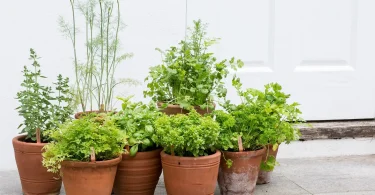Understanding the Benefits of Growing Herbs Indoors
Growing herbs indoors offers multiple advantages that can transform your home and cooking experience. By cultivating herbs indoors, you gain direct access to fresh, organic flavors year-round, cutting out the need for store-bought alternatives. It also lets you control growing conditions, ensuring optimal health and quality of your plants.
Indoor herb gardening enhances air quality because many herbs, like basil and mint, release oxygen and remove toxins. Additionally, it introduces greenery into your living space, improving aesthetics and reducing stress.

You also save money by growing your own culinary herbs, while enjoying their added medicinal and aromatic benefits—all within arm’s reach!
Choosing the Right Herbs for Indoor Gardening
When selecting herbs for indoor gardening, consider their growth habits, light requirements, and your culinary preferences. Some herbs thrive with minimal care, making them perfect for beginners.
Ideal Herbs for Indoor Growing:
- Basil: Requires sunlight and frequent watering; perfect for dishes like pasta and salads.
- Mint: Grows quickly in partial light; great for teas and garnishes.
- Thyme: Low-maintenance and prefers bright, indirect light.
- Parsley: Prefers consistent moisture and moderate sunlight.
- Chives: Need direct light and thrive in small, compact spaces.
Choose herbs that align with your cooking routines and the available light in your space. Mix and match for a versatile indoor garden.

Selecting the Perfect Spot for Your Indoor Herb Garden
Choosing the right location for your indoor herb garden is crucial for success. You need to find a spot that provides plenty of natural light, as most herbs thrive with six to eight hours of sunlight daily. South-facing windows are ideal, but if natural light is limited, consider using grow lights.
Ensure the area maintains a stable temperature between 65–75°F; avoid drafts or heat sources like radiators, which can stress your plants. Humidity is another factor—herbs prefer moderate levels, so keep them away from overly dry or damp areas.
Accessibility matters; select a space where watering, pruning, and harvesting is convenient for you.
Essential Supplies and Tools for Indoor Herb Growth
To start growing herbs indoors, you need key supplies and tools to create the right environment. First, choose pots with drainage holes to prevent waterlogging. Opt for containers sized appropriately for your herbs. Use high-quality potting soil designed for indoor plants; soil mixed with perlite or vermiculite helps with aeration and moisture retention.
A grow light is essential if natural sunlight is limited. LED grow lights are energy-efficient and provide optimal light spectrum for herbs. A watering can with a narrow spout ensures precise watering, preventing overwatering. Include a spray bottle for humidity control, especially for herbs like basil. Keep pruning shears or small scissors handy for trimming and harvesting.
Preparing Your Containers and Soil for Optimal Growth
To start, choose containers with proper drainage holes to prevent waterlogging and root rot. Avoid pots that retain excess moisture unless they have drainage mechanisms. Opt for materials like terracotta or ceramic for better aeration and stability.
For soil, use a high-quality, well-draining potting mix suited for herbs rather than garden soil, which may compact and hamper root growth. Incorporate compost or organic matter for nutrients. If planting multiple herbs in one container, ensure similar soil needs.

Sterilize containers before use to avoid pest or disease transfer. Check container size matches herb root systems, promoting healthy development and preventing overcrowding.
Planting Your Herbs: Seeds vs. Starter Plants
When choosing how to start your indoor herb garden, you can opt for seeds or starter plants. Both approaches have pros and cons.
Seeds:
- Cost-effective: Seeds are generally cheaper and allow you to grow a wide variety of herbs.
- More control: You can start from scratch and have full control over germination and growth.
- Time investment: Growing from seeds requires patience as germination can take days or weeks.
Starter Plants:
- Convenience: Starter plants are already established, so you’ll enjoy quicker results.
- Less risk: These plants bypass the vulnerable seedling stage, cutting down on potential failures.
- Limited variety: You may have fewer options compared to seed varieties.

Choose based on your time, budget, and confidence level.
The Role of Light: Natural vs. Artificial Lighting Solutions
To grow herbs successfully indoors, you must prioritize proper lighting. Start by evaluating natural light sources in your home. Herbs like basil, parsley, and thyme thrive on at least 6-8 hours of direct sunlight daily. South-facing windows are ideal for maximum natural light exposure. If sunlight is limited, artificial lighting provides an excellent alternative.
Consider using LED grow lights, which emit a balanced spectrum for plant growth, or fluorescent lights for smaller herb setups. Position lights 6-12 inches above plants and adjust as they grow. Monitor the light duration; most herbs need 12-16 hours of light per day when using artificial sources.
Watering and Humidity: How to Keep Your Herbs Healthy
Proper watering and maintaining the right humidity are essential for thriving indoor herbs. Overwatering can lead to root rot, while underwatering stresses the plants. Check the soil moisture level by inserting your finger about an inch deep—water only when the topsoil feels dry. Use pots with drainage holes to prevent excess water buildup.

Herbs like basil and cilantro prefer consistent moisture, whereas rosemary and thyme thrive in slightly drier conditions. To boost humidity, group your plants together or place a tray with water and pebbles nearby. Avoid misting leaves frequently, as this can encourage fungal growth. Adjust care depending on seasonal indoor climates.
Fertilizing Your Indoor Herbs: Tips for Year-Round Growth
To keep your indoor herbs thriving, you need to prioritize feeding them with the right fertilizer. Since pots limit the natural nutrient cycle, proper fertilizer use ensures continuous growth. Choose a balanced, water-soluble fertilizer with equal parts nitrogen, phosphorus, and potassium. Dilute it to half-strength to avoid overfeeding, which can harm your plants.
- Frequency: Feed herbs every 4-6 weeks during active growth. Cut back to once every 8 weeks in dormant seasons.
- Organic Options: Use compost tea or fish emulsion for a natural alternative.
- Consider Plant Needs: Basil demands more feeding than thyme or rosemary.
Remember to monitor signs like yellowing leaves for nutrient deficiencies.
Pruning and Harvesting Techniques to Boost Herb Production
Effective pruning and harvesting are essential for maintaining healthy, prolific indoor herbs. Begin pruning once your plants are well-established, typically when they reach about 6 inches in height. Use clean, sharp scissors or pruners to avoid damaging the stems.

- Pruning Tips:
- Trim just above a leaf node to encourage bushier growth.
- Remove any yellowed or damaged leaves to direct energy toward new growth.
- Harvesting Guidelines:
- For leafy herbs like basil or mint, harvest from the top to promote regrowth.
- Avoid removing more than a third of the plant at a time to prevent stress.
Regular attention ensures vibrant, flavorful harvests.
Troubleshooting Common Problems with Indoor Herb Gardens
If your herbs aren’t thriving, inspect their light exposure first. Ensure they receive at least 6–8 hours of bright, indirect sunlight or use grow lights. Overwatering is another frequent issue; check soil moisture by pressing your finger into the dirt. If it feels wet, wait to water.
Yellow leaves may indicate nutrient deficiencies. Use a balanced, water-soluble fertilizer monthly to replenish essential nutrients. Pests like aphids or spider mites can disturb growth; use neem oil or gently wash leaves to remove them. Poor airflow may lead to mold—use a small fan to improve ventilation.
Maintaining proper conditions will help herbs bounce back quickly.
Tips for Incorporating Fresh Herbs into Your Cooking and Lifestyle

- Start with Familiar Herbs: Use common herbs like basil, parsley, or mint to complement daily recipes. These are versatile and can suit salads, pasta, or beverages.
- Choose the Right Pairings: Pair specific herbs with cuisines. For instance, cilantro works well with Mexican or Thai dishes, while rosemary suits roasted meats.
- Utilize Fresh Herbs Daily: Add fresh herbs at the end of cooking to preserve their flavor and aroma. Chop finely to enhance their distribution.
- Experiment with Beverages: Infuse water, teas, or cocktails with fresh mint, lemongrass, or rosemary for refreshing twists.
- Use Herbs in Decoration: Display them in dining areas as centerpieces; they offer fragrance while doubling as edible décor.
The Role of Companion Planting and Herb Pairing Indoors
Companion planting enhances the health and growth of your indoor herbs by leveraging natural symbiosis. You should pair herbs with complementary traits to maximize benefits like pest control, improved soil quality, and enhanced flavors. For example, planting basil alongside parsley or oregano helps repel pests while encouraging robust growth.
Be mindful of growth habits; herbs with similar light and water needs thrive better together. Pair slow-growers like thyme with fast-growers like cilantro to avoid overcrowding. Avoid pairing herbs like mint, which can dominate, unless isolated in their own pots. These thoughtful combinations create a thriving, self-supporting indoor herb garden.

Seasonal Care Adjustments for Indoor Herb Gardens
To keep your indoor herb garden thriving throughout the year, adjust care routines based on seasonal changes. During winter, herbs may need supplemental lighting due to shorter daylight hours. Consider using grow lights to mimic sunlight. Monitor humidity levels, as indoor heating can dry out the air; positioning a small humidifier nearby or placing a tray of water near plants can help.
In summer, herbs may require more frequent watering due to higher temperatures. Ensure proper ventilation to prevent overheating. Regularly inspect for pests that tend to appear during warmer months. Adapting your care practices to the season helps your herbs grow healthily year-round.
Sustaining an Indoor Herb Garden as a Beginner
To keep your herb garden thriving indoors, you need to focus on creating the right conditions for growth. Start by selecting pots with proper drainage holes to avoid waterlogged roots. Place your herbs on windowsills or near south-facing windows where they can receive 6-8 hours of natural sunlight daily. If light is limited, consider using grow lights to support their development.
Water your plants consistently, but ensure the soil dries slightly between waterings. Use well-draining potting soil enriched with organic matter to nourish your herbs. Regularly prune leaves to encourage bushier growth and prevent overcrowding. Pay attention to pests like aphids and mites and act promptly if you spot infestations.



